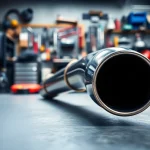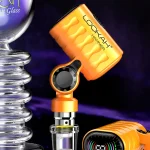Understanding Open Air Merchandisers
What is an Open Air Merchandiser?
Open air merchandisers are refrigeration units designed for displaying a variety of perishable items, particularly in grocery and convenience stores. Unlike traditional closed refrigerators, these units have no doors, allowing consumers easy access while promoting visibility and impulse buying. They enhance the shopping experience, as customers can see products clearly without barriers. Commonly used for beverages, dairy products, and even chilled meals, the open air design encourages sales through aesthetic display and efficient cooling technology.
Common Issues Faced by Merchandiser Owners
Owning an open air merchandiser presents unique challenges. Some common issues include occasional breakdowns in cooling efficiency, condensation accumulation causing water damage, and poor air circulation affecting merchandise freshness. Additionally, owners may face energy inefficiencies that increase operational costs, particularly in regions with extreme temperatures. Understanding these common pitfalls is vital for effective maintenance and timely repairs.
Key Components of Open Air Merchandisers
An open air merchandiser comprises several crucial components:
- Compressor: This is the heart of the cooling system, circulating refrigerant through the system.
- Evaporator Coil: Located inside the unit, the evaporator coil absorbs heat from the refrigerated air.
- Condenser Coil: This component expels heat outside the unit, allowing the refrigerant to cool and cycle back into the system.
- Airflow System: Typically composed of fans and vents, this system ensures a steady flow of cool air, maintaining an even temperature throughout the unit.
- Controls and Thermostat: These regulate temperature settings to ensure the right conditions for merchandise.
Signs Your Open Air Merchandiser Needs Repair
Identifying Cooling Failures
The most alarming sign that an open air merchandiser needs repair is a noticeable drop in cooling effectiveness. If products are warmer than usual, it may indicate refrigerant issues, compressor failure, or coil problems. To troubleshoot, regularly check the temperature settings and compare them with product freshness. A professional technician might need to assess compressor functionalities and refrigerant levels for accurate diagnosis.
Evaluating Electrical and Mechanical Malfunctions
Electrical issues can manifest as inconsistencies in temperature control or periodic shutdowns of the unit. Flickering lights, unusual noises, or frequent tripping of circuit breakers may also suggest underlying electrical problems. Ensure that all electrical connections are secure and functioning properly. For mechanical issues, listen for abnormal sounds and examine moving parts for wear. Maintenance checks on fans and motors are essential to prolonging the unit’s life and ensuring efficient operation.
Recognizing Airflow Problems
Poor airflow can lead to uneven cooling, resulting in product spoilage and loss. Signs of airflow issues include frost buildup on coils, inability to maintain consistent temperatures, or unusual noises from the airflow system. Regular inspection of fans and vents is crucial. Dust and debris buildup can obstruct airflow, so routine cleaning is recommended to maintain optimal performance.
DIY Troubleshooting for Open Air Merchandiser Repair
Essential Tools and Equipment Needed
Before addressing common issues, ensure you have the following tools at hand:
- Multimeter: For testing voltage and electrical connections.
- Thermometer: To accurately gauge internal temperature.
- Vacuum: To clean coils, fans, and vents.
- Basic hand tools: Including screwdrivers and wrenches for adjustments and repairs.
- Refrigerant gauge: Essential for checking refrigerant levels and pressure.
Step-by-Step Repair Procedures
Here are some basic troubleshooting steps:
- Check Power Sources: Ensure the unit is plugged in and operational. Inspect fuses or circuit breakers for malfunctions.
- Examine Temperature Settings: Verify settings on the thermostat and adjust them according to the manufacturer’s specifications.
- Inspect the Condenser and Evaporator Coils: Clean any dirt or debris. Blocked coils can severely impact cooling.
- Test the Compressor: Use a multimeter to check the compressor’s electrical components. If it fails, professional help is needed.
- Replace Filters: If the unit has filters, ensure they are clean and replace them as necessary to keep airflow clear.
When to Call a Professional Technician
While many repairs can be conducted independently, several scenarios necessitate calling in a professional. If the compressor doesn’t start, there are refrigerant leaks detectable by scent or frost buildup, or the repair requires knowledge of advanced electrical systems, it’s best to engage a certified technician. Complex mechanical parts often require specialized tools and expertise that come from years of experience in refrigeration systems.
Preventative Maintenance Strategies
Regular Cleaning and Maintenance Practices
Implementing a consistent cleaning schedule can significantly enhance the performance and lifespan of your open air merchandiser. Frequent cleaning prevents the buildup of dust and debris, especially around coils and filters. Recommended practices include:
- Cleaning the exterior glass and surfaces weekly to maintain an attractive display.
- Wiping down shelves and interior surfaces to remove spills and grime.
- Deep cleaning coils monthly to enhance efficiency and airflow.
Assessing Parts for Wear and Tear
Regular assessments of all components are vital. Check for signs of wear in rubber seals and door gaskets, which can lead to air leaks and reduced efficiency over time. Inspect fan blades and motors for corrosion or damage, and replace them proactively to avoid unexpected breakdowns. Keeping a detailed maintenance log will also help track parts’ conditions and service history.
Scheduling Professional Inspections
It is prudent to schedule professional inspections at least twice a year. During these inspections, technicians will perform a comprehensive evaluation of the unit’s components, ensuring everything functions optimally. They will check refrigerant levels, inspect for potential leaks, and run tests on electrical systems, helping identify problems before they escalate into costly repairs. Engaging professional services contributes significantly to the longevity and efficiency of your open air merchandiser.
Cost Considerations for Open Air Merchandiser Repair
Average Costs for Common Repairs
Repair costs for open air merchandisers vary widely based on the problem at hand and geographical location. Here are some average costs associated with common repairs:
- Compressor replacement: $1,000 – $2,500
- Evaporator coil replacement: $600 – $1,200
- Electrical component repair: $100 – $500
- Routine maintenance service: $150 – $300
Understanding these figures, along with budgeting for potential expenses, is crucial to maintaining operational efficiency.
Budgeting for Preventative Maintenance
Allocating a budget for routine maintenance is necessary to avoid larger repair bills in the future. Typically, it’s recommended to set aside approximately 1-3% of the unit’s initial cost annually for preventive care. This allocation can cover regular cleaning, component replacements, and technician inspections throughout the year, ensuring the unit is always in peak condition.
Finding Reliable Repair Services
When scouting for reliable repair service, consider the following steps:
- Look for certified professionals with specific experience in refrigeration systems, especially open air merchandisers.
- Check customer reviews and testimonials to gauge levels of customer satisfaction.
- Inquire about warranties or guarantees on repairs performed.
- Compare prices and response times among various service providers before making a selection.
By choosing a reputable technician, you ensure that your investment continues to yield returns through efficient performance and reduced downtime, making open air merchandiser repair a seamless operational aspect of your business.









